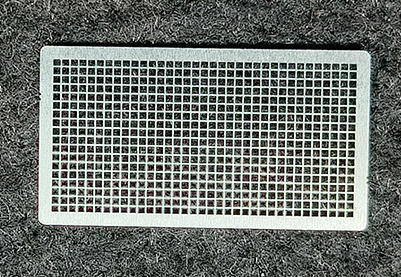
The following three options are often available for processing metal horn mesh.
1.Stamping
Stamping is common for the processing of metal horn mesh, mainly for the rough appearance requirements and not strict requirements for mesh holes, you can choose the stamping process. For metal horn mesh with larger mesh holes and wider spacing, there are more mesh holes.
Advantages: low processing cost, fast speed, simple personnel arrangement.
Disadvantages: high mold cost, mesh has burr rolled edge, easy to deform, not conducive to update new products, high cost of R&D.
2. Laser cutting
Laser cutting of metal flared mesh is not widely used, although its cut hole wall vertical, but also has many shortcomings
Advantages: the mesh can be cut to very small and dense, and the hole wall is vertical.
Disadvantages: the edge of the mesh has a burr, there are residues around the mesh after cutting, the nature of the material changes, the edge of the black residue burning a phenomenon.
3. Etching process
Etching process metal horn mesh avoids the disadvantages of stamping and laser cutting. Etched metal horn mesh can be processed with ultra-thin stainless steel and other metal materials between 0.01MM and 2MM. The mesh has uniform holes, no sarcasm, no rolled edges, and vertical hole walls.
Advantages: smooth holes, no sarcasm, flat and even surface, easy to change the design, low cost.
Disadvantages: high volume processing, relatively higher cost than stamping, much lower cost than laser.




